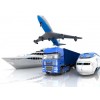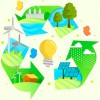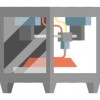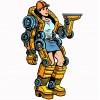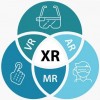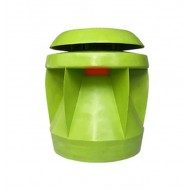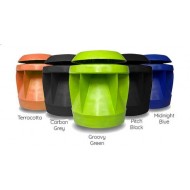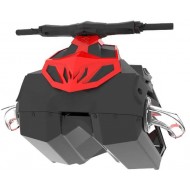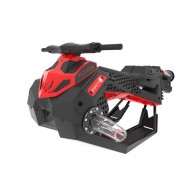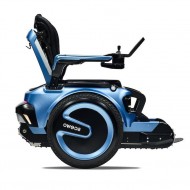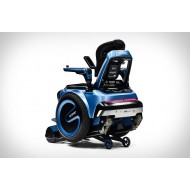Укажите рекомендуемую цену:
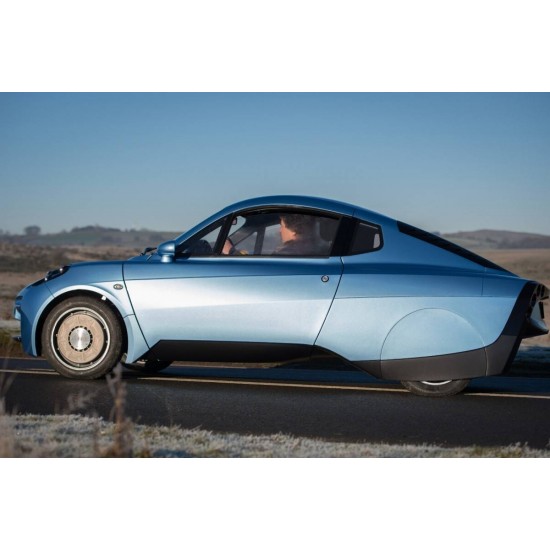
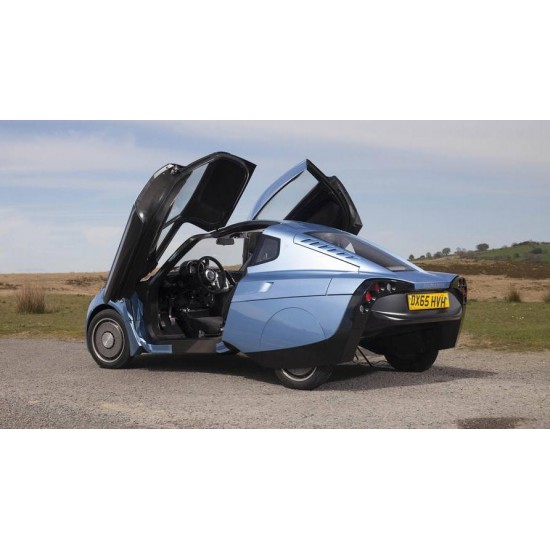
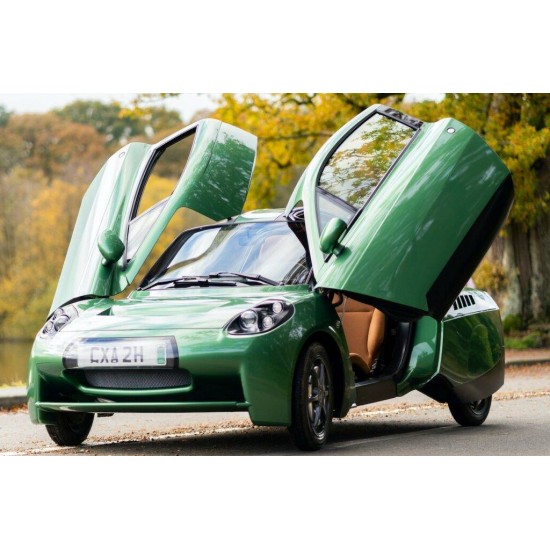
Бесплатно
2-3 Days



Водородный автомобиль Riversimple Rasa
МЫ НАЧАЛИ С ВОДОРОДНОГО ТОПЛИВНОГО ЭЛЕМЕНТА
Мы начали с водородного топливного элемента, манифеста экологичного дизайна и чистого листа бумаги. Каждый аспект Rasa был создан и исследован на предмет простоты, эффективности, легкости, прочности, доступности, безопасности и устойчивости. И имя Раса - дань уважения этому чистому листу бумаги - Табула Раса на латыни означает «чистый лист».
Этот первый автомобиль представляет собой двухместный «сетевой электрический» автомобиль, работающий на водородном топливном элементе. Инженерный прототип разогнался до скорости более 60 миль в час и аккуратно проезжал сквозь пробки в Лондоне, а также скользил по проселочным дорогам Повиса.
Шасси представляет собой монокок из углеродного волокна, сделанный из очень легких, но чрезвычайно жестких композитов из углеродного волокна. Шасси-монокок весит менее 40 кг.
РАЗРАБОТАНО С НУЛЯ
ЛЕГКОСТЬ - ЭТО КЛЮЧ
Наша машина очень легкая - инженерный прототип весит 580 кг. Он воплощает в себе различные ключевые особенности:
- Четыре электродвигателя, по одному на каждое колесо
- Двигатели как тормоза - восстановление более 50% кинетической энергии при торможении
- Суперконденсаторы для хранения этой энергии и обеспечения большей части мощности для ускорения
- Водородный топливный элемент малой мощности (8,5 кВт)
- Корпус из легких композитов
Это синтез всех этих технологий, который обеспечивает новаторскую эффективность и дальность действия, во много раз лучше, чем использование топливных элементов в обычных тяжелых транспортных средствах. Серийный прототип должен расходовать около 250 миль на галлон (эквивалент) с запасом хода 300 миль. Выбросы равны нулю в выхлопной трубе и c.40gCO 2 / км Состоятельные колеса - даже если водород поступает из природного газа.
КАК ЭТО РАБОТАЕТ?
Водород проходит через протонообменную мембрану в топливном элементе, где он соединяется с кислородом, образуя воду и электричество. Затем электричество поступает к двигателям каждого колеса. Эти моторы маленькие, легкие и дают машине полный привод.
Когда автомобиль тормозит, кинетическая энергия, которая обычно теряется в виде тепла, улавливается в виде электричества. Когда машина замедляется, это электричество заливает батарею суперконденсаторов в передней части машины. В отличие от батареи, эти суперконденсаторы могут очень быстро брать большой заряд, но они не накапливают много энергии. Энергия, которую они забирают, снова отправляется обратно в двигатели и обеспечивает энергию для ускорения.
автомобиль-сеть-электрический_02Причина, по которой мы называем это сетевым электромобилем, заключается в том, что энергия передается по сети вокруг автомобиля. Он может течь в любом направлении по любому пути, кроме обратного в топливный элемент.
Наша инновационная конструкция сети означает, что нам нужен только топливный элемент, достаточно большой, чтобы обеспечить крейсерскую скорость, а не ускорение. Мы получаем обратно более 50% энергии торможения, которая используется для ускорения. Это кульминация 15-летнего развития, и это прекрасно.
Мы начали с водородного топливного элемента, манифеста экологичного дизайна и чистого листа бумаги. Каждый аспект Rasa был создан и исследован на предмет простоты, эффективности, легкости, прочности, доступности, безопасности и устойчивости. И имя Раса - дань уважения этому чистому листу бумаги - Табула Раса на латыни означает «чистый лист».
Этот первый автомобиль представляет собой двухместный «сетевой электрический» автомобиль, работающий на водородном топливном элементе. Инженерный прототип разогнался до скорости более 60 миль в час и аккуратно проезжал сквозь пробки в Лондоне, а также скользил по проселочным дорогам Повиса.
Шасси представляет собой монокок из углеродного волокна, сделанный из очень легких, но чрезвычайно жестких композитов из углеродного волокна. Шасси-монокок весит менее 40 кг.
РАЗРАБОТАНО С НУЛЯ
ЛЕГКОСТЬ - ЭТО КЛЮЧ
Наша машина очень легкая - инженерный прототип весит 580 кг. Он воплощает в себе различные ключевые особенности:
- Четыре электродвигателя, по одному на каждое колесо
- Двигатели как тормоза - восстановление более 50% кинетической энергии при торможении
- Суперконденсаторы для хранения этой энергии и обеспечения большей части мощности для ускорения
- Водородный топливный элемент малой мощности (8,5 кВт)
- Корпус из легких композитов
Это синтез всех этих технологий, который обеспечивает новаторскую эффективность и дальность действия, во много раз лучше, чем использование топливных элементов в обычных тяжелых транспортных средствах. Серийный прототип должен расходовать около 250 миль на галлон (эквивалент) с запасом хода 300 миль. Выбросы равны нулю в выхлопной трубе и c.40gCO 2 / км Состоятельные колеса - даже если водород поступает из природного газа.
КАК ЭТО РАБОТАЕТ?
Водород проходит через протонообменную мембрану в топливном элементе, где он соединяется с кислородом, образуя воду и электричество. Затем электричество поступает к двигателям каждого колеса. Эти моторы маленькие, легкие и дают машине полный привод.
Когда автомобиль тормозит, кинетическая энергия, которая обычно теряется в виде тепла, улавливается в виде электричества. Когда машина замедляется, это электричество заливает батарею суперконденсаторов в передней части машины. В отличие от батареи, эти суперконденсаторы могут очень быстро брать большой заряд, но они не накапливают много энергии. Энергия, которую они забирают, снова отправляется обратно в двигатели и обеспечивает энергию для ускорения.
автомобиль-сеть-электрический_02Причина, по которой мы называем это сетевым электромобилем, заключается в том, что энергия передается по сети вокруг автомобиля. Он может течь в любом направлении по любому пути, кроме обратного в топливный элемент.
Наша инновационная конструкция сети означает, что нам нужен только топливный элемент, достаточно большой, чтобы обеспечить крейсерскую скорость, а не ускорение. Мы получаем обратно более 50% энергии торможения, которая используется для ускорения. Это кульминация 15-летнего развития, и это прекрасно.
- Запас: 2-3 Days
- Модель: Rasa
$0.00
Без НДС: $0.00
